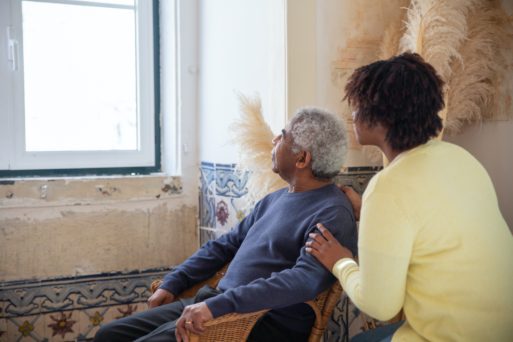
Hospital-at-home programs provide intensive care at patient’s private residences
For years, the number of Americans dying at home has increased, eventually outpacing the number of people dying in hospitals. One in three Americans has experienced a family member dying at home within the past five years, and the awareness and acceptance of hospice home programs continues to grow. Mirroring this, more and more Americans are able to experience intensive medical care at home as hospital-at-home programs have popped up across the U.S.
Hospital-at-home programs intend to allow patients with serious medical conditions to avoid hospitalizations and instead receive a similar level of care at home. Doctors assess the patient either in person during a home visit or via video visit, and nurses come to the home twice a day to administer medications and provide other care. Patients are provided with any medical equipment that they need, and lab work can be drawn and some imaging or diagnostic tests can also be done in the home. Rudie Watzig spoke to Time Magazine about his experience with the hospital-at-home program, sharing,
“I remember one time, I needed an X-ray of my lungs … so they had this guy — he came over with a frickin’ van, wheeled an X-ray machine into my living room and he put the plate right behind the chair here. I took an X-ray right where I’m sitting right now … the only thing they couldn’t bring to me was a CT machine.”
While some less intensive healthcare has been provided in the home for decades, difficulties in providing care to seriously ill patients during the COVID-19 pandemic led to a drastic expansion in hospital-at-home programs. As hospitals overflowed with COVID patients, they sought ways to keep other patients at home yet still receiving care. In response, the Centers for Medicare and Medicaid Services (CMS) waived normal regulations about providing hospital-level care in the home to allow providers to be reimbursed for their services through December 31, 2024. There has been an explosion in hospital-at-home systems since the reimbursement waiver, although some hospitals question how long that will continue if there is legislative push back to extending beyond 2024.

Caregiving burden may be higher for hospital-at-home programs
Another concern with hospital-at-home programs is the level of caregiver burden. Family members often don’t realize how intense their role will be when caring for critically ill loved ones. While caregivers are not asked to handle IVs or other medical duties, they are responsible for helping the patient use the bathroom, turning side-to-side, preparing food and water, and tracking intake. Some worry that the strain may be too great on already frazzled caregivers.
For many patients, however, hospital-at-home programs are infinitely better than prolonged hospital stays, and studies show increased patient satisfaction with hospital-at-home programs. Patient Rudie Watzig teared up thinking about the extra time he got to spend at home with his three sons, sleeping in his own bed and eating his wife’s homemade food. He describes the hospital-at-home program in this way: “I am telling you — and this is not hyperbole — it literally saved my life.”

 Hospital-at-Home Programs Are Revolutionizing Patient Care
Hospital-at-Home Programs Are Revolutionizing Patient Care


 “As Tears Go By” by Marianne Faithfull
“As Tears Go By” by Marianne Faithfull

 Funeral Favors Offer Visitors a Tangible Memento
Funeral Favors Offer Visitors a Tangible Memento















